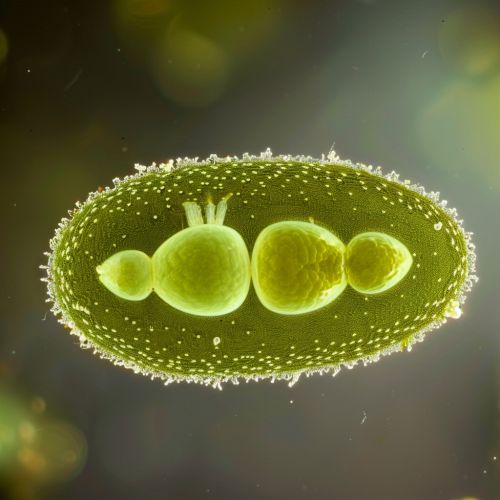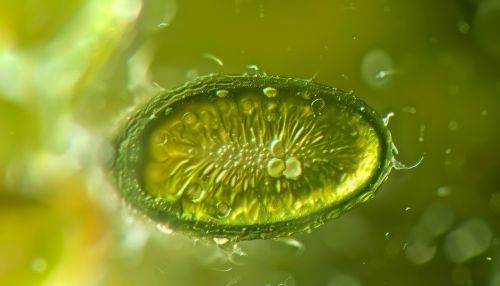Chloroplasts
Introduction
Chloroplasts are a type of cellular organelle found in plant cells and some algae. They are crucial for photosynthesis, the process by which light energy is converted into chemical energy to fuel the organism's activities. Chloroplasts are unique among organelles due to their ability to carry out photosynthesis and their possession of their own DNA, which is a characteristic they share with mitochondria.


Structure
Chloroplasts are large organelles, typically ranging from 1 to 10 micrometers in diameter. They are surrounded by a double membrane, with an intermembrane space in between. The outer membrane is permeable to small organic molecules, while the inner membrane is less permeable and houses many transport proteins.
Inside the chloroplast is the stroma, a dense fluid that contains enzymes necessary for photosynthesis, as well as the chloroplast's own DNA and ribosomes. Suspended within the stroma are stacks of thylakoids, the site of the light-dependent reactions of photosynthesis. These stacks, called grana, resemble stacks of coins and are interconnected by stroma thylakoids, or lamellae.
Each thylakoid has a membrane that contains integral and peripheral membrane proteins, as well as pigments like chlorophyll. These pigments absorb light and use the energy to drive the reactions of photosynthesis.
Function
The primary function of chloroplasts is to carry out photosynthesis. Light energy absorbed by the chlorophyll and other pigments in the thylakoid membranes is used to generate ATP and NADPH, two molecules that store energy in a form that the cell can use. This part of photosynthesis, known as the light-dependent reactions, also produces oxygen as a byproduct.
The ATP and NADPH produced in the light-dependent reactions are then used in the stroma to power the light-independent reactions, also known as the Calvin cycle. During the Calvin cycle, carbon dioxide is fixed into organic molecules in a process known as carbon fixation. The end product of the Calvin cycle is glucose, a simple sugar that the plant cell can use for energy or convert into other types of organic molecules.
In addition to photosynthesis, chloroplasts also play a role in other cellular processes. For example, they can synthesize fatty acids and amino acids, and they are involved in the plant's immune response.
Evolution
Chloroplasts are thought to have originated from a type of photosynthetic bacteria known as cyanobacteria. According to the endosymbiotic theory, a eukaryotic cell once engulfed a cyanobacterium, but instead of digesting it, the cell and the bacterium formed a symbiotic relationship. Over time, the cyanobacterium evolved into a chloroplast, losing some of its independence but providing the host cell with the ability to carry out photosynthesis.
Support for the endosymbiotic theory comes from several lines of evidence. For example, chloroplasts have their own DNA, which is circular like that of bacteria, and they divide by a process similar to bacterial binary fission. Additionally, the structure of chloroplasts is similar to that of cyanobacteria.
